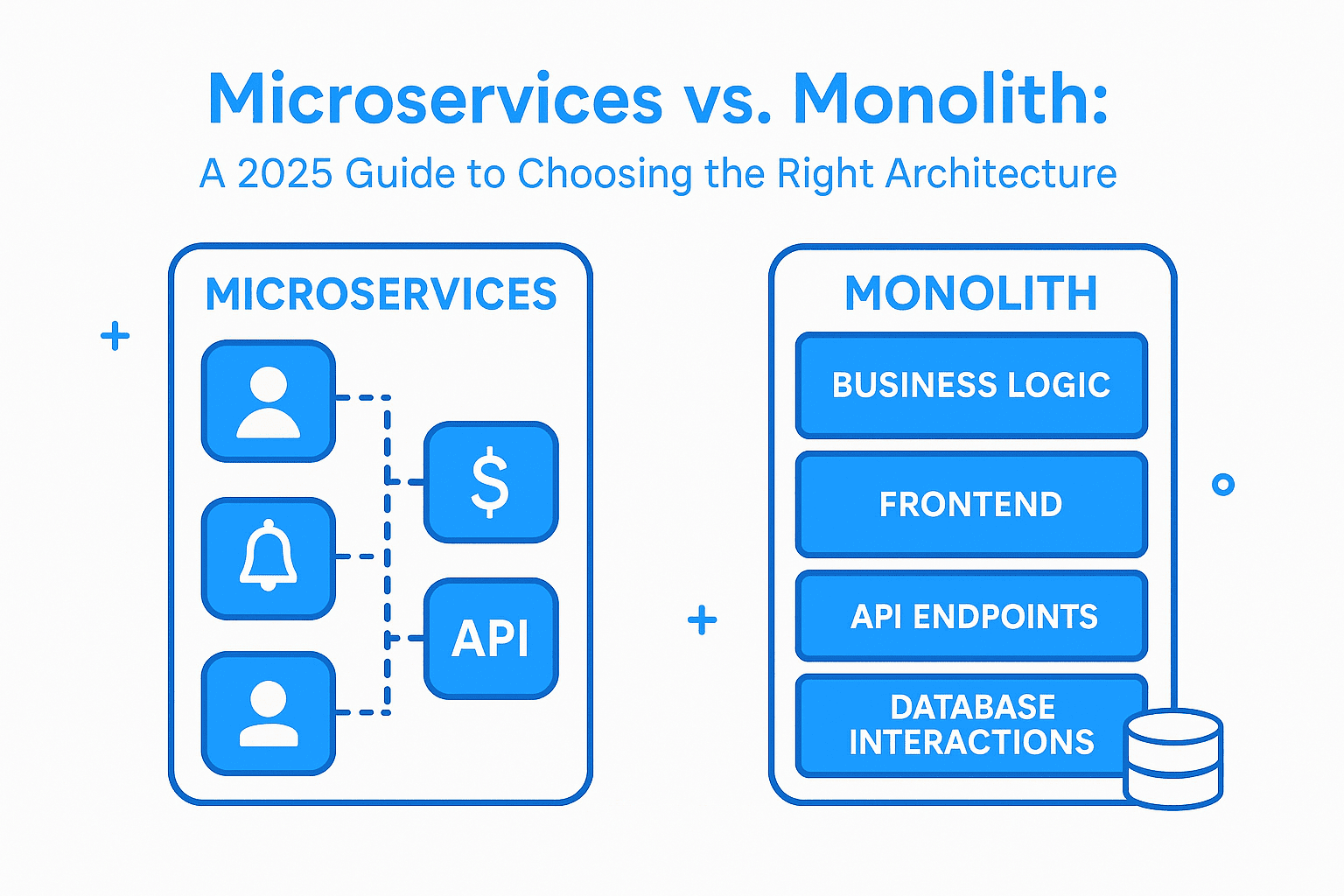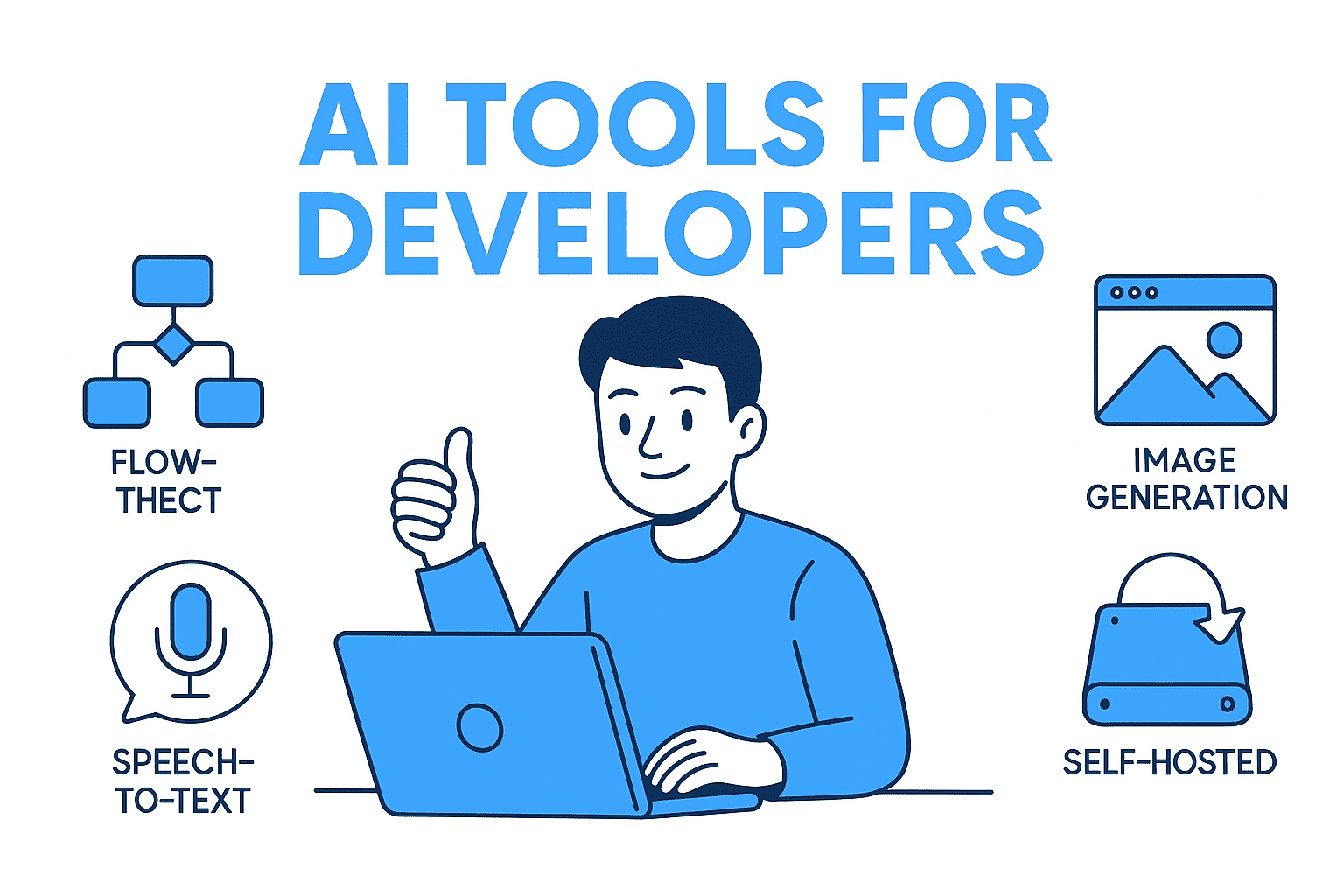Choosing the right backend architecture in 2025? You’re likely stuck between microservices and a monolithic setup.
The wrong choice can lead to bottlenecks, rising costs, or wasted development time.
This guide breaks down the pros, cons, and real-world use cases of each model. Plus, you’ll get migration strategies, API design tips, and when to use each—based on actual projects.
What Is a Monolith?
A monolith is a single codebase that contains:
- Business logic
- Frontend (sometimes)
- API endpoints
- Database interactions
Everything is bundled into one deployable unit (like a .jar, .war, or Docker container).
🔧 Example: Laravel or Spring Boot App
You might build a monolith using:
- Laravel + Blade (PHP)
- Spring Boot (Java)
- Rails (Ruby)
- Django (Python)
All in one place. Easy to build. Easy to deploy.
What Are Microservices?
Microservices split your app into smaller, independent services.
Each microservice:
- Has its own logic
- Runs in its own process
- Often has its own database
- Talks to others via HTTP APIs, gRPC, or message queues
You might build:
- A User Service
- A Payment Service
- A Notification Service
All deployed separately.
Quick Comparison Table
| Feature | Monolith | Microservices |
|---|---|---|
| Codebase | Single codebase | Multiple codebases |
| Deployment | One-click | Multiple pipelines |
| Communication | Function calls | API or messaging |
| Scaling | App-level | Service-level |
| Dev Team Size | Small/medium | Medium/large |
| Onboarding | Easier | Harder |
| Debugging | Straightforward | Distributed & complex |
| Release Cycle | Unified | Independent per service |
When to Choose a Monolith (in 2025)
Monoliths still work very well—especially for small to medium teams.
✅ Use a Monolith When:
- You're building an MVP or prototype
- The app has a single team working on it
- You need fast iterations
- Hosting and ops budgets are tight
- Devs are full-stack generalists
🧠 Real-World Example
A Kuwait-based eCommerce startup built their MVP using Laravel + Livewire in a monolith. Within 3 months, they launched, tested, and validated their product without worrying about complex infrastructure.
When to Use Microservices (in 2025)
Microservices are powerful—but require serious planning.
✅ Use Microservices When:
- Your platform is growing fast
- Different teams own different modules
- You need service isolation for security or uptime
- Parts of your app scale independently (e.g., video encoding)
- You're doing DevOps, CI/CD, container orchestration
🧠 Real-World Example
A European EdTech platform started with Node.js monolith. As their user base grew past 100,000 DAUs, they split into:
- User Service (NestJS)
- Auth Service (Go)
- Content Service (Python Flask)
Now, each team deploys weekly without blocking others.
How to Migrate: Monolith to Microservices
You don’t need to break the monolith all at once.
🔄 Step-by-Step Migration Strategy
-
Start with a modular monolith
- Use packages/modules to separate logic
-
Identify bottlenecks
- What parts fail or scale the most?
-
Carve out a service
- Start with low-risk modules like
notificationsorsearch
- Start with low-risk modules like
-
Expose APIs
- Use REST or gRPC to allow microservices to talk
-
Split the database (if needed)
- Introduce data replication or event sourcing
-
Use gateways and service discovery
- Add API Gateway (like Kong, NGINX, or Spring Cloud Gateway)
API Design Tips for Microservices
- ✅ Use OpenAPI/Swagger to document each service
- ✅ Handle errors gracefully and uniformly
- ✅ Use idempotency keys for safe retries
- ✅ Add observability: logs, tracing, metrics (Grafana, Prometheus)
- ✅ Secure APIs with JWT or OAuth2
SEO Keywords This Post Targets
- Microservices vs Monolith 2025
- Monolithic architecture vs microservices
- Microservices migration plan
- Best backend architecture for startups
- Monolith to microservices step-by-step
- Microservices API gateway
- When to use microservices
Final Take: Which Should You Choose?
🟢 Go Monolith if:
- You want fast development
- You're testing an idea
- You have 1–2 developers
🟢 Go Microservices if:
- You're scaling rapidly
- You have specialized teams
- You're building a platform (multi-tenant, multi-service)
Remember: You don’t have to pick one forever. Start with what makes sense today—and evolve as your product grows.
Want Help?
Need architecture advice for your Laravel, Spring Boot, or Node.js project? Want a custom migration plan from monolith to microservices?
Let’s talk.
🚀 Let’s build something amazing! If you have a project in mind or need help with your next design system, feel free to reach out.
📧 Email: safi.abdulkader@gmail.com | 💻 LinkedIn: @abdulkader-safi | 📱 Instagram: @abdulkader.safi | 🏢 DSRPT
Drop me a line, I’m always happy to collaborate! 🚀



